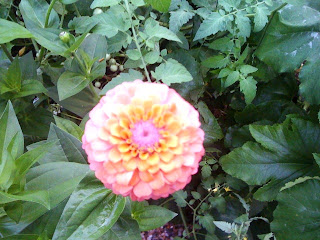In 2009 we purchased a home in the Village of Millerton. This blog catalogs the changes of our home, the Village of Millerton and surrounding areas.
Thursday, July 28, 2011
Millerton - Things to Do
Wednesday, July 27, 2011
Millerton - Gardening
 This year, I've tried a few new things in our Garden.
This year, I've tried a few new things in our Garden.



 Here is an update on my Brussels Sprouts...
Here is an update on my Brussels Sprouts... Thursday, July 21, 2011
Millerton - Interesting Places


From 1930 to 1960 Innisfree was the private garden of Walter and Marion Beck. In 1960 Innisfree Foundation under the stewardship of landscape architect Lester Collins opened the garden to the public. Today, Innisfree is held in trust by its board of trustees, both for the people of New York and for people throughout the world to enjoy and study garden art.
Innisfree Garden lies in the hollow which surrounds Tyrrel Lake; low wooded hills give the site enclosure. Innisfree embraces the Eastern design concept of asymmetric balance that combines rhythm, pattern, space and form in a harmony independent of formal symmetry. In Western gardens little is hidden. The garden, like a stage set, is there in its entirety; its overall design revealed at a glance. The traditional Eastern garden hides this complete view. Visitors walk into a series of episodes or pictures and can enter the sequence of pictures wherever they choose. The rugged topography of the Innisfree site invariably enframes these pictures called cup gardens. A garden picture may be composed of several small cup gardens within the larger one.
Dominant in the design of the garden are natural stone, sculptured land forms or berms and carefully engineered water features. Stone is an infinitely suggestive material, rich with poetic, philosophical, and artistic meaning. Innisfree has an endless supply of rocks. The glacier which carved the lake deposited on the property a combination of sandstone, limestone, granite and quartz. These rocks are gorgeous, water-warn, lichen-encrusted pieces of sculpture that can effortlessly steal the show. Their placement, however, must be exact. Six inches right or left, backward or forward can wreck the picture.
The building of berms, like the placing of rocks requires intuition and imagination. A berm can give direction or enclosure; a berm can be impressive sculpture or merely an undulation of earth needed to relieve the flatness of the ground. Like the rocks, the land forms are permanent design elements in the garden; they do not grow, shed in the Fall, or sicken mysteriously.
At Innisfree water is paramount. Tyrrel Lake is a large, deep natural lake from which water is pumped into a hillside reservoir. A complex system of underground pipes takes this water to various parts of the garden to be used not only for irrigation but also for the man-made streams, pools, waterfalls and sculpture which make the garden so exceptional.